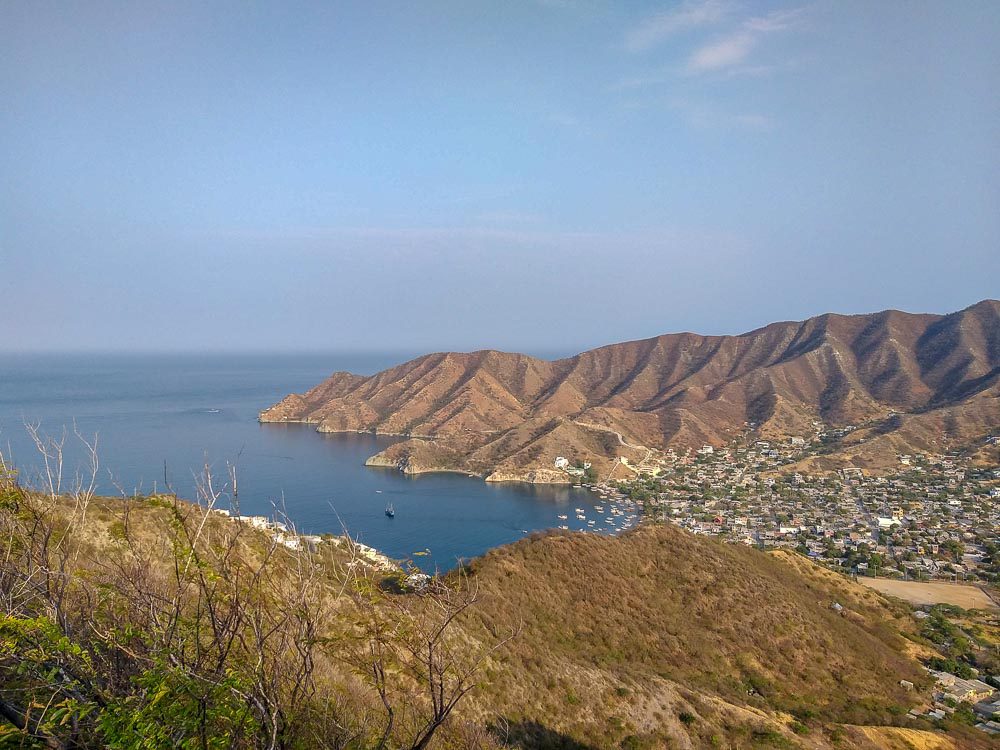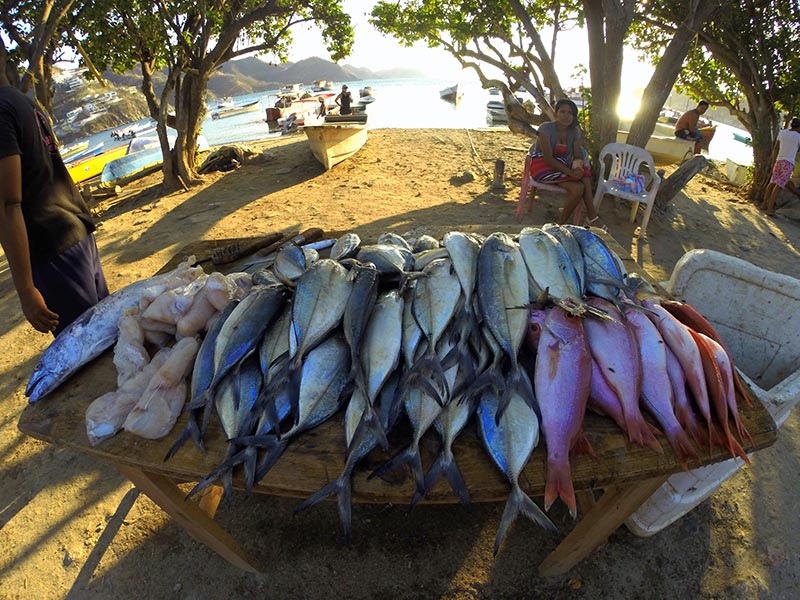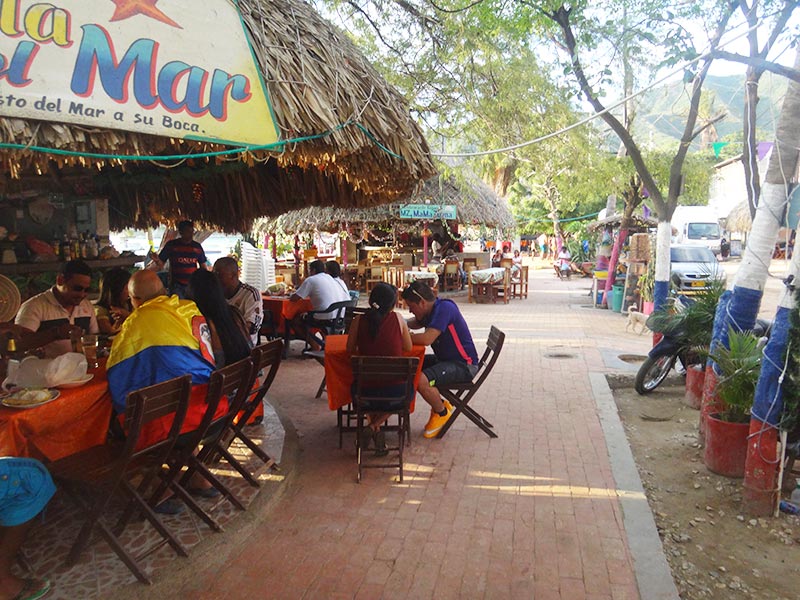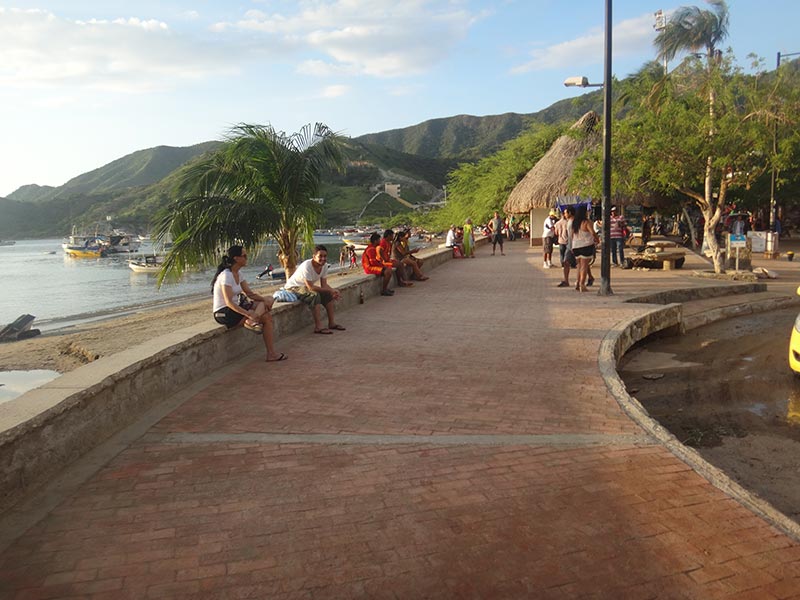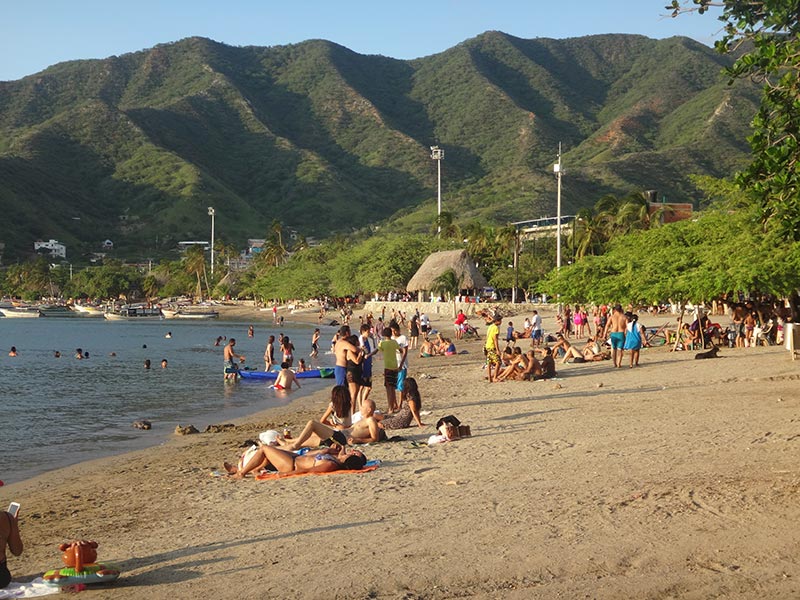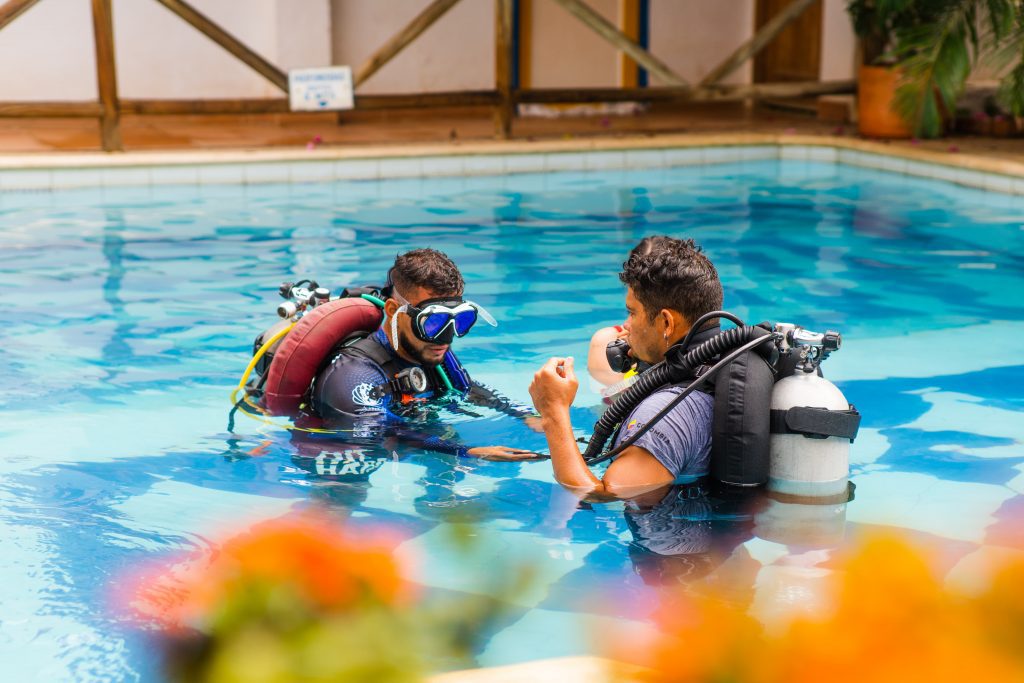Brief history of Taganga: the Origin of Taganga
We present you a brief history of Taganga from the origin. The village of Taganga is a fishing village, descendants of the Tayrona indigenous group. In their daily practices traces of its 400 years of ethnic descent who are manifested in physical appearance and primitive group behavior. Unfortunaly the culture and respect for “Mother Earth” were completely lost compared the 4 tribes of “Sierra Nevada de Santa Marta”. According to researchers who conducted studies in this area of the Atlantic Coast, established that corresponded to the Tayrona culture of the sixteenth century.
Until the 50s Taganga was a cultural, economic and technological isolation due to the lack of good road access to the town. So, this resulted in considerably different cultural aspects of the people of Santa Marta.
You can still see traits of Indian culture as shown by the names of several places in the bay. Therfore, some places names as Dumbira, Dunca Rinka, Dumaruka are originary from sacred rituals areas of the “Linea Negra” established by Colombian government.
Taganga from fishing village to touristic site
Tourism as an economic activity is relatively new in the history of Taganga, but has taken great importance since it began 35 years ago with the construction of the road linking the city to Taganga Santa Marta. But the construction of this road has introduced many substantial changes in the social, economic and cultural organization, ending the geographic and cultural isolation in which it had held until 1953. (Silva Vallejo, 2007).
From Taganga Tayrona National Park begins, but is a “Dead End” English speakers as they say, it is a dead end. The visitor chooses to actually go to Taganga because the road does not pass, just comes to town. This aspect is very important in the life of the place. As consecuences, a significant part of the population never leaves the visitor Taganga and often also wants to stay.
Despite the access road built, still quite isolated Taganga Santa Marta and foreign tourists had made far more interest in Taganga many “Samaria” (born in Santa Marta).
The decline of fishing in Taganga
According to the census of the DANE, Taganga has approximately 5,000 inhabitants, of which 39% were engaged in artisanal fisheries (González Porto, 2005). Although fishing has always been the backbone of the economy of the region, for various reasons it has declined sharply as confirm fishermen village elders. Traditional fishing with the “chinchorro” kind of (net) is becoming less productive and therefore fishermen have to go fishing ever further, causing more expenses and changes in family structure.
The lack of income and economic alternatives, has impacted negatively on the welfare of the township. However, the core of society “taganguero” had quite resisted the invasion of the historic center of town by outsiders or foreigners, until recently.
Economics evolution in this brief history of Taganga
The traditional economy, the primary sector, with income from fishing gave room for a third sector economy, tourism services type, transforming society radically.
With the arrival of tourism came new businesses, such as diving schools, restaurants in kiosks, hotels, clubs, and shipping between beaches. Taganga has been touristically developed in an uncontrolled manner without planning and integrated resource management.
In 1988 there was only one hotel in Taganga, today has more than 50 hotel establishments with increasingly accelerated openings. Over 100 commercial establishments related to tourism, hotels, restaurants, bars, diving centers, travel agencies, craft shops, etc. are recorded. As a result, Taganga became a worldwide spot in diving.
Tourism and activities directly and indirectly related to this economic sector, currently contribute a significant percentage Taganga development. A large majority of the economically active population works directly in tourism and many more benefit in some way in the industry. Today, there are native people of the region who own kiosks, restaurants, boat and business in terms of tourism, and we note that there is a percentage of the population with a better lifestyle, there is another big no It had access to those benefits from tourism. This is presented in the income levels earned by residents of Taganga and distribution.
Conclusion of this brief story of Taganga
This brief story of Taganga shows us because tourism is vital for Taganga. Not only is it essential to conserve and improve every day but also seek to create new forms of attraction to the tourist. This depends on the social and economic well -being of many families. And development always has to take into account the aspects of sustainable tourism.
For this, community education is essential. It is an arduous task after generations of bad practices. Who said sustainable tourism would be easy to establish?

